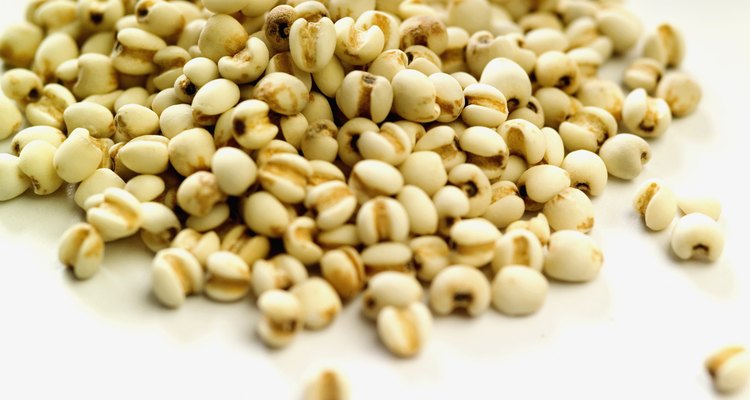
Medioimages/Photodisc/Digital Vision/Getty Images
Homesteaders and small farmers may grow oats on soil with ample sunlight, in both spring and fall for a two-season harvest. Even when grown in small patches, oats processed at home can provide nutrient-rich meals for both humans and animals. For oats, processing includes harvesting, sheaving, shocking, threshing, roasting, hulling or milling, and winnowing, if you plan to feed humans. Most animals, except chickens, will eat unhulled oats and straw. Some householders and farmers also grow oats as a cover crop, or “green manure,” to nourish and protect the soil during the winter, and harvest and process the remainder in midsummer.
Wait until oats are mature, about 3 feet high for most varieties, before you begin harvest. Harvest your oats when you expect at least 24 to 48 hours of rain-free weather.
Cut the oat grass stems with the plant heads intact, using a scythe or sickle. You may use the grasses for forage and the cleaned oat heads for human food after you’ve processed the oats. The typical oat head will yield 30 or more grains inside their outside covering, or hull.
Allow the cut oat plants, called oat straw, to cure and dry on the ground for a day or two. Oats retain more moisture when they are growing than many other grain crops and will need more drying time.
Gather the dry oat straw into loose bundles or sheaves. One bundle should be about as much as you can carry easily under one arm. Combine two bundles to form a larger sheaf.
Form five long pieces of oat straw into a bundle. Twist the pieces tightly together to form a rope. Wrap the rope around the middle of the oat bundle and tuck the end under to secure. Repeat for all bundles or sheaves.
Stand the sheaves upright with the bottoms and tops flared out to form shocks. Shocks are long, narrow rows of sheaves running in a north-south direction. This allows maximum air flow for more efficient drying.
Thresh the oat stacks when they are completely dry. Drying oats may take at least two weeks. Spread out a large clean sheet on a level patch of dry ground. Unbind the oat sheaf onto the sheet. Flail, or hit, the straw over and over until the oat grains separate from the stems.
Separate the oat grains, sill in their hard hulls, from the straw. Store the straw for animal feed or mulch.
Loosen the oat hulls in the oven if you plan to eat the oats. Roast the oats on a cookie sheet in an oven at 180 degrees for 90 minutes. The hull will puff up and begin to break away from the edible oat groat inside.
Use a burr mill or a roller mill to carefully grind the oat hull away from the groat. Collect everything, groat and hulls, into bushel baskets and cover with screening or mesh until you are ready to winnow.
Wait for a dry, breezy day to separate, or winnow, your oats and hulls. Spread out a sheet on a flat, dry ground. Bring out your bushel baskets.
Winnow the oats. Toss your hands full of the oats and chaff into the air. The breeze will carry away the hulls and the heavier grains will fall onto the sheet.
Collect your oats. Store in a cool, dry place in a bin made of fine mesh to allow air to circulate.
Related Articles
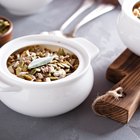
How to Cook Oat Groats in a Slow Cooker

What Is White Oat?

Bulgar Wheat Vs. Couscous

How to Cook Oat Groats in a Crock Pot
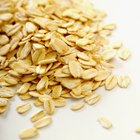
Can You Substitute Quick Cook Oats for ...
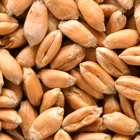
How to Cook Soft Wheat Berries
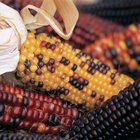
How to Dry Corn on the Cob
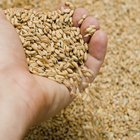
How to Make Bread Flour

What Is the Difference Between Rolled ...

How to Dry Corn for Popcorn
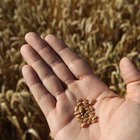
How Is Wheat Processed?
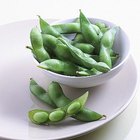
How to Make and Eat Edamame, Microwave ...
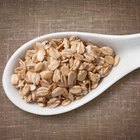
Does Instant Oatmeal Have Less Fiber ...
Free Things to Do in Oklahoma City

How to Roast Corn in the Husk
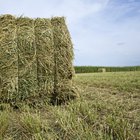
Alfalfa Hay Nutrition Information

How to Eat Buckwheat Raw

Alternative Flours to Make Pizza
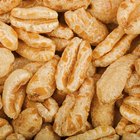
How to Cook With Kamut

How to Prevent Bananas From Browning ...
References
- “The Encyclopedia of Country Living 10th Edition”; Carla Emery; 2008
- “Country Life”; Paul Heiney; 1998
Resources
Writer Bio
Kate Sheridan is a freelance writer, researcher, blogger, reporter and photographer whose work has appeared in numerous newspapers, magazines and trade publications for over 35 years. She attended Oakland University and The University of Michigan, beginning her journalism career as an intern at the "Rochester Eccentric." She's received honors from the Michigan Press Association, American Marketing Association and the State of Michigan Department of Commerce.
Photo Credits
Medioimages/Photodisc/Digital Vision/Getty Images